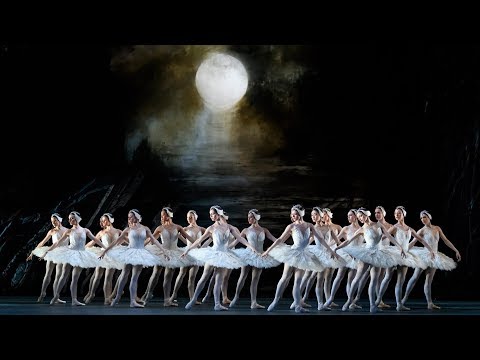Ballet Corps: Roles & Salaries

Corps De Ballet Job Description Template
Corps de Ballet is a term in ballet that refers to the group of dancers who perform together as a unit. They are an integral part of any ballet company and play a crucial role in creating the overall aesthetic and atmosphere of a production. The job description of a corps de ballet member involves a combination of technical skills, discipline, and dedication. They must have a strong foundation in classical ballet technique and be able to execute intricate choreography with precision and grace. In addition to their technical abilities, corps de ballet dancers must also possess strong teamwork skills, as they often perform in large groups and must synchronize their movements perfectly. Corps de ballet dancers are responsible for maintaining the integrity of the choreography and the artistic vision of the ballet. They must be able to blend seamlessly with the rest of the ensemble, creating a harmonious and unified visual experience for the audience. They often perform in the background, providing a backdrop for the principal dancers, but their presence is essential in creating the overall ambiance of the production. Two important qualities for a corps de ballet dancer are discipline and versatility. They must have the discipline to consistently work on their technique and improve their skills. They also need to be versatile, as they may be required to perform a variety of styles and roles, from classical to contemporary. In conclusion, being part of a corps de ballet requires a high level of technical skill, discipline, teamwork, and versatility. These dancers are the backbone of a ballet company and contribute significantly to the success of a production.Corps De Ballet Responsibilities
- Performing in ensemble dance pieces
- Learning and rehearsing choreography
- Maintaining technical proficiency in various dance styles
- Attending regular ballet classes and rehearsals
- Participating in costume fittings and costume maintenance
- Collaborating with other dancers and artistic staff
- Adhering to a professional code of conduct and etiquette
- Participating in promotional events and galas
- Attending and participating in company meetings and workshops
- Assisting with the training of younger dancers
- Maintaining physical fitness and conditioning outside of rehearsals
- Adapting to different performance venues and stages
- Performing in multiple shows and productions per season
- Following the direction of the ballet master/mistress and choreographers
Corps De Ballet Requirements
How Much Does A Corps De Ballet Make?
Corps De Ballet Salary
| Position | Minimum Salary | Maximum Salary |
|---|---|---|
| Corps De Ballet Member | $30,000 | $50,000 |
| First Corps De Ballet Member | $40,000 | $60,000 |
| Principal Corps De Ballet Member | $50,000 | $80,000 |
Corps De Ballet Salary refers to the range of salaries earned by different positions within the corps de ballet, which is a group of dancers in a ballet company. The minimum and maximum salaries vary based on the dancer’s level and experience.
For a Corps De Ballet Member, the salary ranges from $30,000 to $50,000. A First Corps De Ballet Member earns between $40,000 and $60,000, while a Principal Corps De Ballet Member receives a salary ranging from $50,000 to $80,000.
These salary ranges reflect the dedication, skill, and experience required for each position within the corps de ballet. Dancers at higher positions often have more responsibilities and perform more demanding roles, hence the higher salary range.
Corps De Ballet Salaries by Country
Top Paying Countries for Corps De Ballet
| Country | Average Salary |
|---|---|
| United States | $70,000 |
| France | $55,000 |
| Russia | $50,000 |
| Canada | $45,000 |
| Germany | $40,000 |
In the world of ballet, the salaries for corps de ballet dancers can vary significantly depending on the country they work in. According to recent data, the top paying countries for corps de ballet dancers are the United States, France, Russia, Canada, and Germany. In the United States, dancers in this position can expect to earn an average salary of $70,000 per year. France follows closely with an average salary of $55,000, while Russia offers an average of $50,000. Canada and Germany complete the list with average salaries of $45,000 and $40,000, respectively.
A video on the topic Corps De Ballet
Video Source : Royal Opera HouseInterview Questions for Corps De Ballet
1. What is the role of the Corps de Ballet in a ballet production?
The Corps de Ballet is a group of dancers who perform together as a unit and support the principal dancers in a ballet production. They often portray a variety of characters and play a significant role in creating the overall aesthetic and atmosphere of the performance.
2. How does one become a member of the Corps de Ballet?
To become a member of the Corps de Ballet, dancers usually go through years of rigorous training in ballet technique and develop a strong foundation in classical ballet. They typically audition for ballet companies and, if selected, start as apprentices before being promoted to full members of the Corps de Ballet.
3. What are some of the challenges of being part of the Corps de Ballet?
Being part of the Corps de Ballet requires immense discipline, stamina, and the ability to work harmoniously with a large group of dancers. It can be physically demanding, as dancers often perform repetitive movements and maintain precise formations for extended periods. Additionally, the competition within the ballet world can be intense, making it challenging to secure a position in a prestigious company.
4. How does the Corps de Ballet contribute to the storytelling in ballet?
The Corps de Ballet plays a crucial role in storytelling by creating the backdrop and atmosphere for the principal dancers. Through synchronized movements and formations, they can portray various elements such as a crowd, a corps of swans, or a group of fairies. Their collective presence adds depth and enhances the narrative of the ballet.
5. What is the significance of uniformity in the Corps de Ballet?
Uniformity is essential in the Corps de Ballet as it creates a visually pleasing and cohesive ensemble. Dancers must strive to synchronize their movements, lines, and expressions to maintain a unified appearance. This uniformity allows the audience to focus on the overall performance rather than individual dancers within the group.
6. How do dancers in the Corps de Ballet support and interact with the principal dancers?
Dancers in the Corps de Ballet support the principal dancers by complementing their movements, enhancing the visual impact of their performances, and providing a sense of scale and depth to the stage. They must have a strong sense of teamwork and coordination to ensure seamless interactions with the principal dancers.
7. What is the role of the Corps de Ballet during rehearsals?
During rehearsals, the Corps de Ballet is responsible for mastering intricate choreography, maintaining proper formations, and synchronizing their movements. They work closely with the ballet master or mistress to refine their technique and ensure that their performances align with the artistic vision of the production.
8. How does the Corps de Ballet contribute to the overall visual aesthetics of a ballet production?
The Corps de Ballet contributes to the overall visual aesthetics by creating visually stunning formations and patterns on stage. They enhance the beauty of the production through synchronized movements, intricate footwork, and graceful poses. Their presence adds depth, elegance, and energy to the performance.
9. What are some of the key qualities and skills required to be successful in the Corps de Ballet?
Some key qualities and skills required to be successful in the Corps de Ballet include strong ballet technique, physical strength, flexibility, endurance, discipline, teamwork, attention to detail, and the ability to adapt quickly to different choreographic styles and demands.
10. How does being part of the Corps de Ballet contribute to a dancer’s growth and development?
Being part of the Corps de Ballet allows dancers to gain valuable performance experience, refine their technique, and develop their artistry. It provides an opportunity to work with experienced professionals, learn from their peers, and improve their skills through regular rehearsals and performances. Additionally, being immersed in a professional ballet environment fosters personal growth, discipline, and a deeper understanding of the art form.






